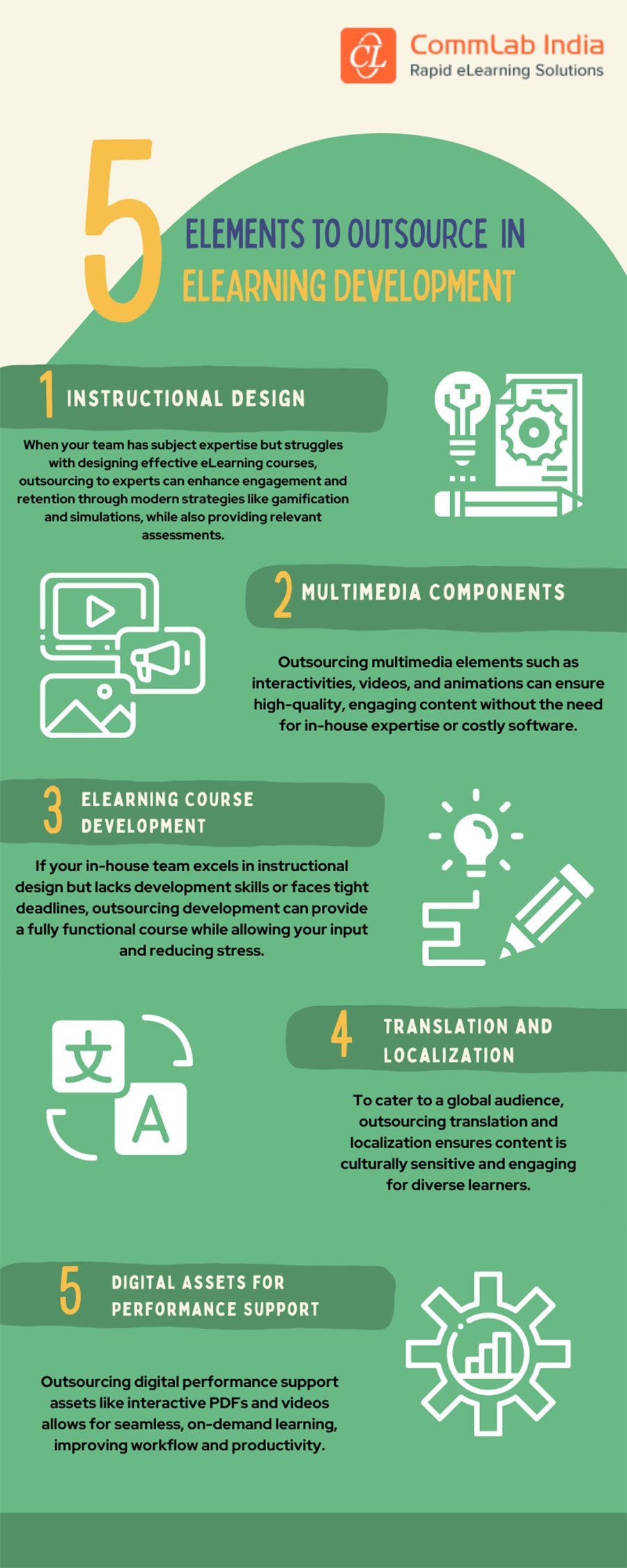Answered! 5 eLearning Outsourcing Questions to Make a Compelling Business Case

In the fast-paced world of online training, eLearning outsourcing has emerged as a game-changer for many organizations. Imagine having the expertise of a seasoned eLearning vendor at your fingertips, but here's the catch: Does your internal team share the same vision? Without the engagement of key stakeholders, your eLearning outsourcing journey could be like a ship adrift in the sea of uncertainty.
Outsourcing eLearning boosts efficiency and innovation, while scaling training at your pace.
The top 3 benefits it offers include:
- Cost Efficiency
- Expertise and Innovation
- Faster Development and Scalability
This article will guide you through the process of building a compelling business case for outsourcing your eLearning initiatives.
1. Why Outsource?
"Why outsource eLearning? It's about solving a problem, not just a desire. If you have an in-house team for learning and development, find a compelling reason for custom eLearning outsourcing. Is your team stretched thin, or do you crave expert insights to create engaging eLearning experiences? Discover these reasons for a compelling case.
Explore the benefits
2. What is the Current Process?
Assess the Current Process: Before outsourcing, grasp your eLearning setup. Who manages it internally? Is it a specialized team or spread across departments? Check if your programs meet stakeholder expectations, drive innovation, and gather learner feedback. For outsourcing newcomers, aim to gather 80% of this data. Don't forget to explore your training budget, a key factor in the decision-making process.
3. How Can Outsourcing eLearning Improve Current Training Methods?
Your eLearning outsourcing case must highlight how it enhances your current methods. Use insights and stakeholder feedback to pinpoint training pain points and outsourcing objectives. Imagine a pharmaceutical client: they transformed a complex data management PowerPoint into engaging online learning, benefiting data managers worldwide. This showcases the rationale for outsourcing.
→ Download Now: Tips for Choosing the eLearning Development Outsourcing Partner [eBook]
4. Are there Risks Associated with Outsourcing?
In any business venture, risk assessment is crucial. Your business case should not only highlight the benefits but also address potential risks linked to eLearning outsourcing. Consider scenarios where sensitive information cannot be shared with external vendors, prompting the need for in-house resources. In certain cases, confidentiality agreements may be necessary before outsourcing. Compiling a comprehensive list of potential risks empowers you to develop effective solutions and workarounds.
5. How Will You Measure the Success of eLearning Outsourcing?
Your eLearning outsourcing plan must define how success will be measured. Be prepared to elucidate the cost implications and how outsourcing can yield long-term benefits. Showcase how outsourcing can enhance the return on investment (ROI) in training. Success hinges on aligning your outsourcing objectives with the training program's goals.
Now, if you are wondering about the different eLearning elements to outsource, here’s an infographic for you

Wrapping Up
Finally, ensure your business case includes a clear roadmap for selecting the right eLearning outsourcing partner. Summarize your outsourcing plan concisely. Remember that outsourcing eLearning isn't just about convenience; it's a strategic move that can bolster training effectiveness, streamline cost projections, and allow your organization to focus on its core mission. Initiating the journey toward eLearning outsourcing with a well-crafted business case is your compass to a successful future.
Now that you have made a strong case, your next step would be to choose the right choice for eLearning development outsourcing. Dive into our comprehensive eBook for expert insights and guidance.
Editor’s note: This post was originally published in February 2018 and has been updated for comprehensiveness.





